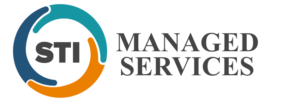Consumer PCs vs Business Grade PCs- What You Need to Know
We’ve all seen computers advertised online or at your local big box retailer at super cheap prices and with high specs. While there are often great deals to be had- a more expensive, business-grade PC will often be more cost-effective to purchase in the long run. What are the primary differences between consumer and business grade PCs? There are three main factors to consider- lets take a closer look:
1. Quality of Components- The common components that make up a PC (Processor, Memory, Hard Drive, Power Supply) are not all created equally. The i5 processor or 500GB hard drive you find in a consumer PC is often from a generic manufacturer with less stringent quality control and testing procedures. It is not unusual to open up a Dell Dimension or HP Pavillion (consumer system) and find that identical models have different parts due to supply or pricing issues. Business grade systems use high quality components and are built for heavier use and will tend to have a longer lifespan.
2. Manufacturer Warranty- This goes hand in hand with #1. Most HP business grade desktop PCs come with a 3 year onsite warranty with covers parts and labor. If you have a power supply fail- HP will have a tech out to your site, the next business day, to replace it at no charge. This is a great thing. But HP doesn’t offer this because they are nice bunch of guys and girls. They offer it because they know, in the huge majority of cases- these systems aren’t going to break. They know this because they have been built with quality components and high manufacturing standards. Consumer systems usually come with a 1yr limited warranty. If you have an issue you may be required to ship your system to a repair center and wait for it to be serviced and returned to you. If you’re lucky- they may ship you a part and have you try to replace it yourself while they walk you through it on the phone. And if your year warranty is up? Well- you’ll probably get a hearty ‘good luck’ from the manufacturer and wind up calling your nephew ‘who is good with computers’. Needless to say, this is not something that is going to make your business more productive.
3. Operating System and Preinstalled Software- Another important consideration is the version of Windows that comes installed on a new PC. Many consumer systems come with a ‘home’ or ‘standard’ version of Windows that is fine if you are just going to be checking Facebook or watching Netflix. But in a business environment- the Professional Version of Windows has the additional features and security required to operate in a network. This adds to the cost of the PC. The other consideration is what is known in the business as ‘bloatware’. Bloatware is all of those annoying programs that come preloaded as trial versions on your new PC. Consumer PCs tend to be loaded with bloatware as the software vendors pay them to include their software on a new PC in hopes that you will buy it. This is another way of keeping the cost down. But you may not realize that all of these programs are running in the background, clogging up resources and slowing down your system, not to mention popping up from time to time just to annoy you. Bloatware is much less of a problem on business grade systems, although it does exist. If you purchase equipment via STI Computer Systems, you will get a PC with a clean image, free of unnecessary software and optimized for performance.
So next time you see a great deal on a PC- keep in mind what you are getting. In the PC hardware business there is a saying- ‘When buying computers, there is cheap, fast, and good. Pick 2’. Think about that for a minute!
